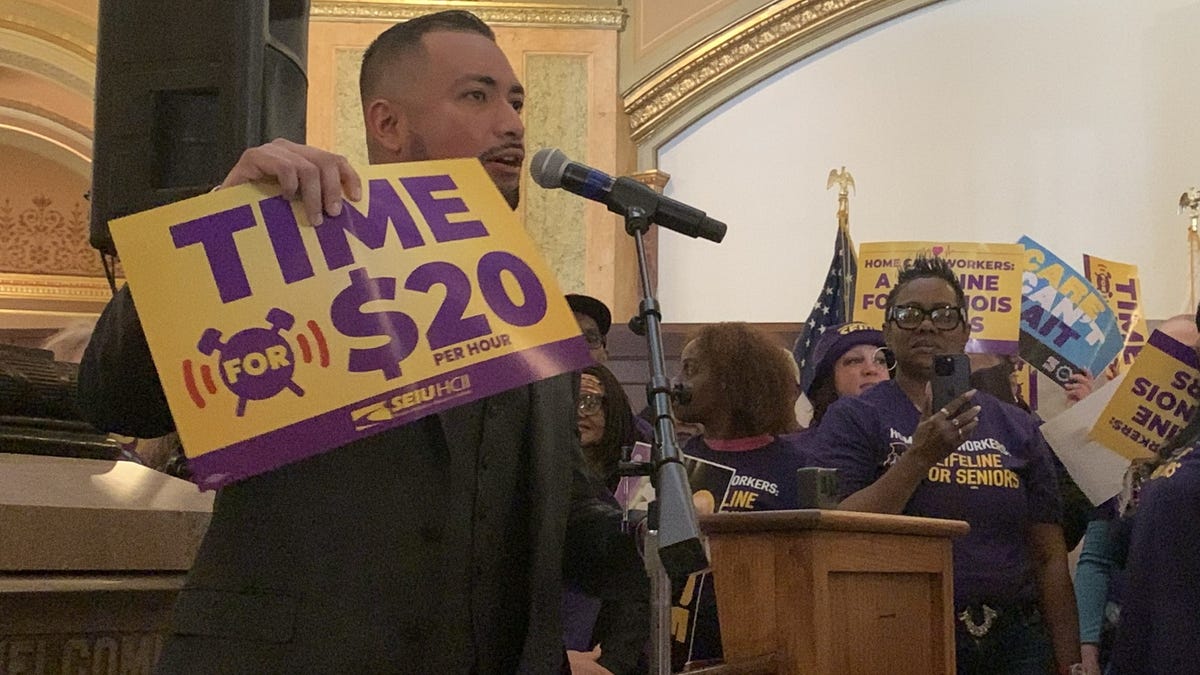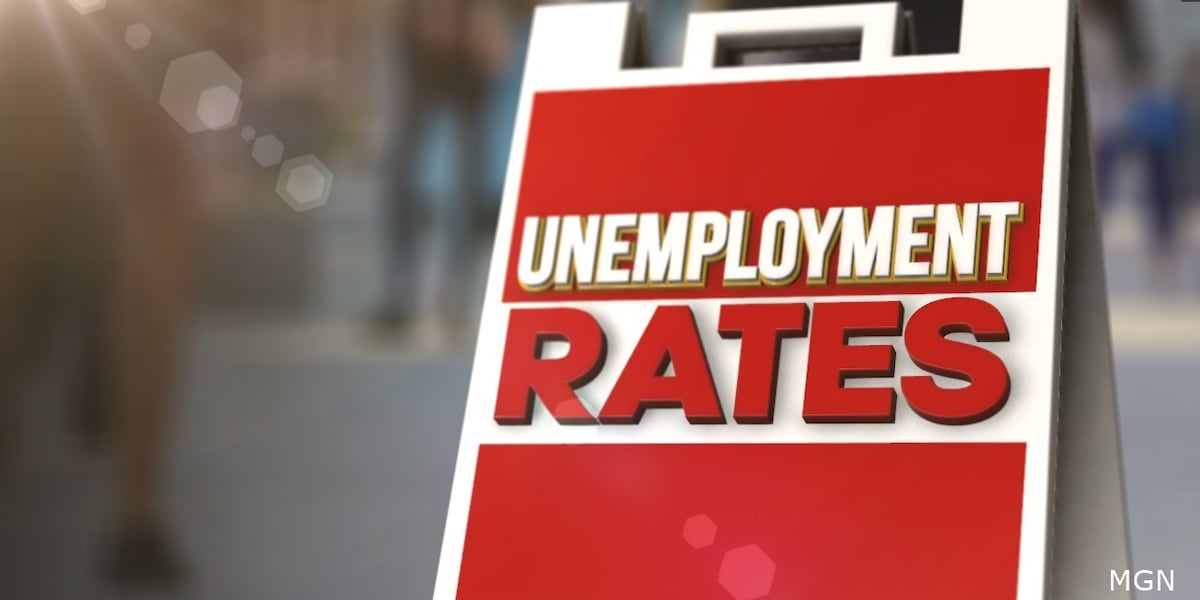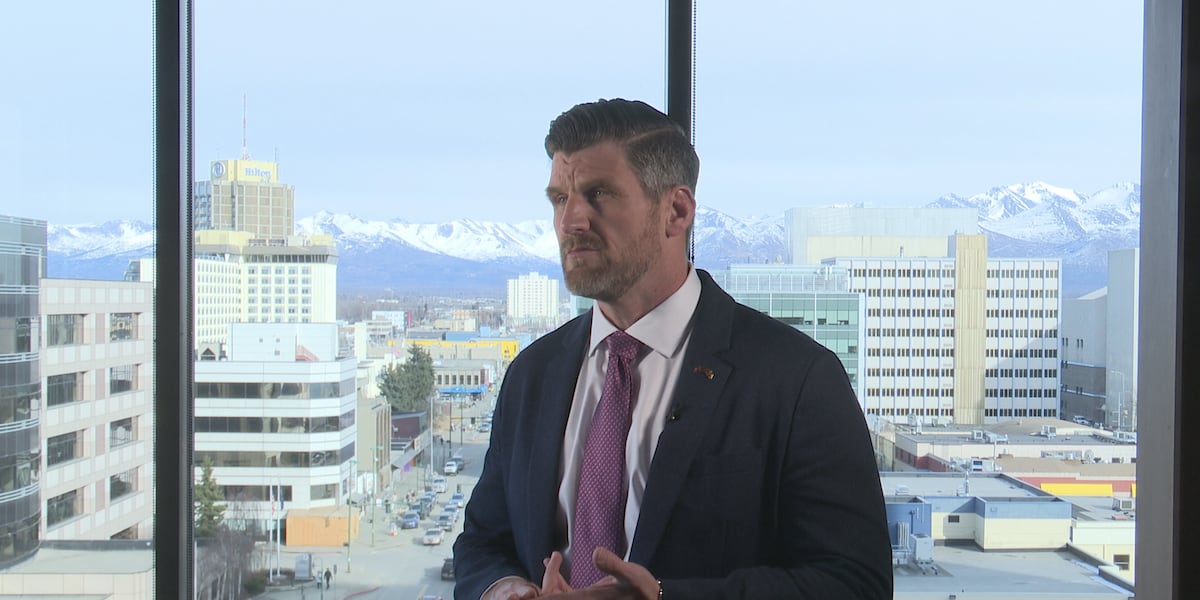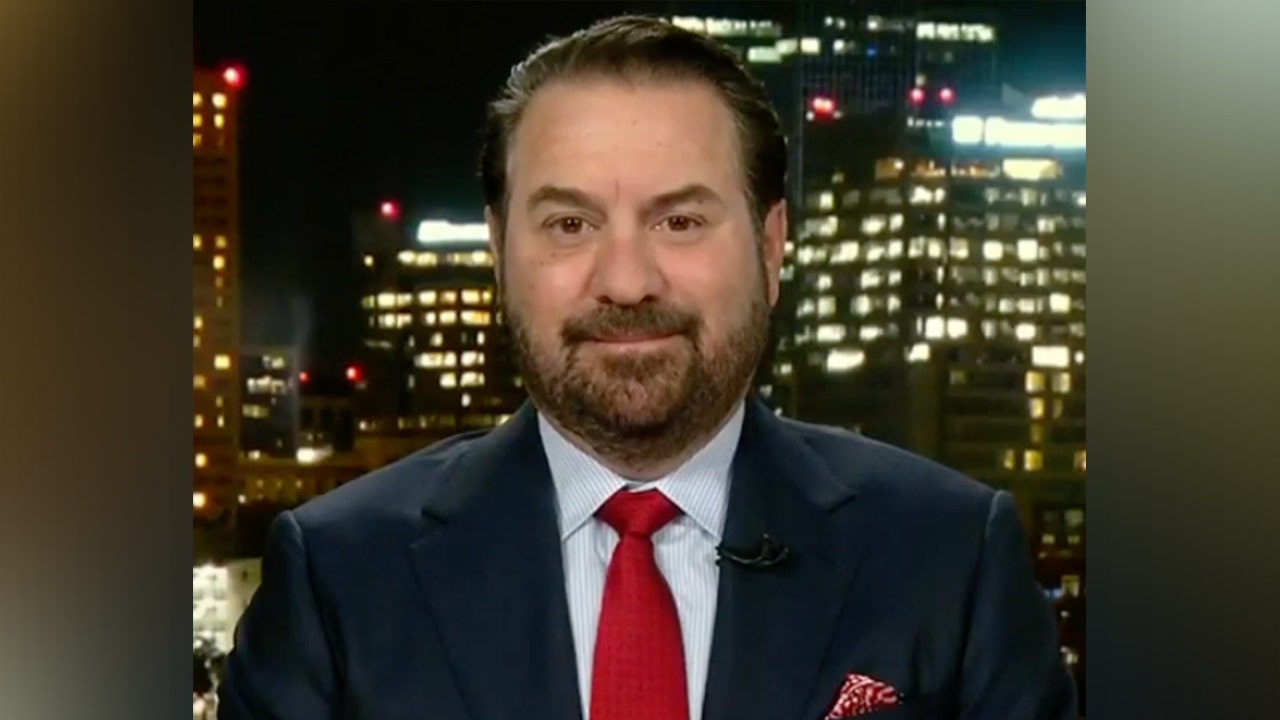Finance
The hiring rate trending lower could be a sign of problems to come
A version of this post first appeared on TKer.co
The stock market climbed to all-time highs, with the S&P 500 setting a closing high of 5,762.48 on Monday. For the week, the S&P rose 0.2% to end at 5,751.07. The index is now up 20.6% year to date and up 60.4% from its October 12, 2022 .
On Friday, we learned the U.S. economy created a healthy 254,000 net new jobs in September. While the number confirms that the labor market isn’t falling apart, the pace of net job creation in this economic cycle.
One labor market indicator that’s been drawing more attention lately is the . In addition to measuring those hired into newly created jobs, this metric also captures those hired into existing jobs vacated by quitters, fired workers, and others. It’s been trending lower, and it .
According to the report, employers hired 5.32 million workers in August. While hires far exceed the 1.61 million people laid off during the period, the hiring rate — the number of hires as a percentage of the employed workforce — has fallen to 3.1%, matching the lowest level of the current economic cycle.
As we’ve been discussing , the layoff rate has , trending at around 1%, which is below prepandemic levels. That’s a good thing.
But with , we should be at least a little wary about resting on the economy’s low layoff laurels.
“The hiring rate turns BEFORE layoffs,” Renaissance Macro’s Neil Dutta explained in a research note on Tuesday.
When you think about how well-managed companies operate, this makes sense.
Managers know that a hiring freeze isn’t great news
When the economic tides begin to go out, companies usually don’t go from hiring people one month to immediately sending workers to the unemployment office in the next month.
Unless you’re facing a major business or economic calamity, you probably don’t want to take a hatchet to the headcount. Because what if business activity quickly turns around and you need those workers?
For starters, companies can reduce or freeze hiring, which means not filling new job openings or backfilling roles vacated by former employees. It’s a relatively easy way to keep expenses contained.
If challenges persist, then layoffs could be the next option.
It’s worth mentioning that layoff activity does not need to increase for the unemployment rate to rise. Think about it. Even when the economy is booming, — but many will quickly go back to work if hiring activity is strong. If the same number of people get laid off into an economy with weakening hiring activity, then more jobseekers will not be able to get back to work, and unemployment rises.
Stay vigilant
The JOLTS survey — which provides data on job openings, hiring activity, layoffs, and quits — can be helpful in predicting what’s to come for the major headline economic metrics like net job creation, the unemployment rate, and inflation.
For example, when the posted by employers is high and rising, then you can expect payroll employment to rise and the unemployment rate to fall or stay low. An could be a reflection of worker confidence in a labor market with increasingly competitive wages, which is a .
Today, with but the layoff rate still depressed, the JOLTS metric to watch right now may be the falling hiring rate.
The question now is whether the economy, , will develop in a way that helps stabilize or improve the hiring rate. Friday’s news that the U.S. continues to create jobs at a healthy pace is encouraging.
And to be crystal clear, most metrics point to a strong economy that continues to grow at a healthy clip. In fact, the hiring rate today is higher than where it was during much of the 2009-2020 economic expansion. Our discussion today is not about sounding alarms. However, we should always be mindful of the fact that . And those downturns often come with early warning signs.
Reviewing the macro crosscurrents
There were a few notable data points and macroeconomic developments from last week to consider:
The labor market continues to add jobs. According to the report released Friday, U.S. employers added 254,000 jobs in September. It was the 45th straight month of gains, reaffirming an economy with growing demand for labor.
Total payroll employment is at a record 159.1 million jobs, up 6.8 million from the prepandemic high.
The unemployment rate — that is, the number of workers who identify as unemployed as a percentage of the civilian labor force — declined to 4.1% during the month. While it continues to hover near 50-year lows, the metric is near its highest level since October 2021.
While the major metrics continue to reflect job growth and low unemployment, the labor market isn’t as hot as it used to be.
Wage growth ticks up. Average hourly earnings rose by 0.4% month-over-month in September, up from the 0.5% pace in August. On a year-over-year basis, this metric is up 4.0%.
Job openings rise. According to the , employers had 8.04 million job openings in August, up from 7.71 million in July. While this remains slightly above prepandemic levels, it’s from the March 2022 high of 12.18 million.
During the period, there were 7.12 million unemployed people — meaning there were 1.13 job openings per unemployed person. Once a sign of , this telling metric is now below prepandemic levels.
Layoffs remain depressed. Employers laid off 1.61 million people in August. While challenging for all those affected, this figure represents just 1.0% of total employment. This metric continues to trend near pre-pandemic low levels.
Hiring activity, while cooling, continues to be much higher than layoff activity. During the month, employers hired 5.32 million people, down from 5.42 million in July.
People are quitting less. In August, 3.08 million workers quit their jobs. This represents 1.9% of the workforce. It continues to move below the prepandemic trend.
A low quits rate could mean a number of things: more people are satisfied with their job; workers have fewer outside job opportunities; wage growth is cooling; productivity will improve as fewer people are entering new unfamiliar roles.
Job switchers still get better pay. According to , which tracks private payrolls and employs a different methodology than the BLS, annual pay growth in September for people who changed jobs was up 6.6% from a year ago. For those who stayed at their job, pay growth was 4.7%.
Unemployment claims tick higher. rose to to 225,000 during the week ending September 28, down from 219,000 the week prior. This metric continues to be at levels historically associated with economic growth.
Card spending data is holding up. From JPMorgan: “As of 25 Sep 2024, our Chase Consumer Card spending data (unadjusted) was 0.6% above the same day last year. Based on the Chase Consumer Card data through 25 Sep 2024, our estimate of the U.S. Census September control measure of retail sales m/m is 0.13%.“
Gas prices fall. From : “Despite literal and figurative storm clouds here and abroad, the national average for a gallon of gas still fell by three cents from last week to $3.19. The devastation wrought by Hurricane Helene did little to impact gasoline supply, but it crushed demand in affected areas by destroying infrastructure and causing power outages.”
Mortgage rates tick higher. According to , the average 30-year fixed-rate mortgage rose to 6.12%, up from 6.08% last week. From Freddie Mac: “The decline in mortgage rates has stalled due to a mix of escalating geopolitical tensions and a rebound in short-term rates that indicate the market’s enthusiasm on rate cuts was premature. Zooming out to the bigger picture, mortgage rates have declined one and a half percentage points over the last 12 months, home price growth is slowing, inventory is increasing, and incomes continue to rise. As a result, the backdrop for homebuyers this fall is improving and should continue through the rest of the year.”
There are in the U.S., of which 86 million are and of which are . Of those carrying mortgage debt, almost all have , and most of those mortgages before rates surged from 2021 lows. All of this is to say: Most homeowners are not particularly sensitive to movements in home prices or mortgage rates.
Construction spending ticks lower. declined 0.1% to an annual rate of $2.13 trillion in August.
Manufacturing surveys don’t look great. From S&P Global’s : “The September PMI survey brings a whole slew of disappointing economic indicators regarding the health of the US economy. Factories reported the largest monthly drop in production for 15 months in response to a slump in new orders, in turn driving further reductions in employment and input buying as producers scaled back operating capacity.”
Similarly, the ISM’s signaled contraction in the industry.
Keep in mind that during times of perceived stress, soft survey data tends to be more exaggerated than hard data.
Services surveys look great. From S&P Global’s : “U.S. service sector businesses reported a strong end to the third quarter, with output continuing to grow at one of the fastest rates seen over the past two-and-a-half years. After GDP rose at a 3.0% rate in the second quarter, a similar strong performance looks likely in the three months to September. Encouragingly, inflows of new business in the service sector grew at a rate only marginally shy of August’s 27-month high. Lower interest rates have already been reported by survey contributors as having buoyed demand, notably for financial services which, alongside healthcare, remains an especially strong performing sector.”
Near-term GDP growth estimates remain positive. The sees real GDP growth climbing at a 2.5% rate in Q3:
Putting it all together
We continue to get evidence that we are experiencing a where inflation cools to manageable levels .
This comes as the Federal Reserve continues to employ very tight monetary policy in its . More recently, with inflation rates having from their 2022 highs, the Fed has taken a less hawkish stance in — even .
It would take monetary policy as being loose or even neutral, which means we should be prepared for relatively tight financial conditions (e.g., higher interest rates, tighter lending standards, and lower stock valuations) to linger. All this means for the time being, and the risk the into a recession will be relatively elevated.
At the same time, we also know that stocks are discounting mechanisms — meaning that .
Also, it’s important to remember that while recession risks may be elevated, . Unemployed people are , and those with jobs are getting raises.
Similarly, as many corporations . Even as the threat of higher debt servicing costs looms, give corporations room to absorb higher costs.
At this point, any given that the .
And as always, should remember that and are just when you enter the stock market with the aim of generating long-term returns. While , the long-run outlook for stocks .
A version of this post first appeared on TKer.co

Finance
WashTec Full Year 2024 Earnings: EPS Beats Expectations

-
Revenue: €476.9m (down 2.6% from FY 2023).
-
Net income: €31.0m (up 11% from FY 2023).
-
Profit margin: 6.5% (up from 5.7% in FY 2023). The increase in margin was driven by lower expenses.
-
EPS: €2.32 (up from €2.09 in FY 2023).
This technology could replace computers: discover the 20 stocks are working to make quantum computing a reality.
All figures shown in the chart above are for the trailing 12 month (TTM) period
Revenue was in line with analyst estimates. Earnings per share (EPS) surpassed analyst estimates by 2.0%.
Looking ahead, revenue is forecast to grow 5.1% p.a. on average during the next 3 years, compared to a 5.0% growth forecast for the Machinery industry in Germany.
Performance of the German Machinery industry.
The company’s share price is broadly unchanged from a week ago.
It is worth noting though that we have found 1 warning sign for WashTec that you need to take into consideration.
Have feedback on this article? Concerned about the content? Get in touch with us directly. Alternatively, email editorial-team (at) simplywallst.com.
This article by Simply Wall St is general in nature. We provide commentary based on historical data and analyst forecasts only using an unbiased methodology and our articles are not intended to be financial advice. It does not constitute a recommendation to buy or sell any stock, and does not take account of your objectives, or your financial situation. We aim to bring you long-term focused analysis driven by fundamental data. Note that our analysis may not factor in the latest price-sensitive company announcements or qualitative material. Simply Wall St has no position in any stocks mentioned.
Finance
Study: Latino Students Use Practical Strategies to Finance College Education

The report, “How Latinos Pay for College: 2025 National Trends,” builds on two decades of research and reveals that while Latino students demonstrate high financial need, they are employing effective cost-saving measures to make higher education affordable.
“Latinos are representative of a post-traditional student profile and changes in policy will be more impactful if made with the strengths and opportunities to serve this profile of students,” write Deborah A. Santiago, CEO, and Sarita E. Brown, President of Excelencia in Education, in the report’s foreword.
The study found that Latino students, who represent one in five postsecondary students nationwide, are more likely to be first-generation college-goers (51% compared to 22% of white students), come from lower-income households (70% have family incomes below $50,000), and have an expected family contribution (EFC) of zero (45%).
“Latino students make pragmatic choices with what they can control to make college affordable,” said Cassandra Arroyo, a research analyst at Excelencia and co-author of the report.
To manage costs, Latino students employ multiple strategies: 56% work 30 or more hours weekly while enrolled, 55% attend part-time or mix their enrollment, 81% choose public institutions, and 89% live off-campus or with parents. These tactics represent a clear departure from the traditional college student profile and align with what Excelencia calls “post-traditional” learners.
The data reveals that Latinos rely more heavily on federal financial aid (58%) than state (30%), institutional (23%), or private aid (13%). Perhaps most significantly, Latino students are more than twice as likely to receive grants (67%) than take out loans (27%), indicating a strong preference for aid that doesn’t require repayment.
Yet despite high application rates for aid (85%), Latinos receive the lowest average financial aid among all racial/ethnic groups at $11,004, compared to $15,850 for Asian, $12,937 for White, and $12,365 for African American students.
“Twenty years later, we are revisiting what has changed and what has stayed the same. There has clearly been some progress, but the need to expand access to opportunity remains,” noted Santiago in the report’s foreword, referencing Excelencia’s initial study on Latino financial aid patterns from 2005.
The report also examines differences in aid receipt by institution type. Latino students at public two-year institutions are less likely to receive financial aid (57%) than those at other sectors, especially private institutions (87%). Furthermore, undergraduate Latinos attending private for-profit institutions are more likely to borrow federal loans (60%) compared to those at public two-year institutions (5%).
Another key finding reveals that Latino students are more likely to receive need-based aid rather than merit-based aid. For state grants, 16% of Latino students received need-based grants compared to only 2% who received merit-only grants.
The report highlights innovative approaches implemented by institutions certified with the Seal of Excelencia. These 46 certified institutions represent less than 1% of all colleges and universities but enroll 17% and graduate 19% of all Latino students nationwide.
Among these institutions, several standout examples emerged. The University of Texas at Austin’s Texas Advance Commitment fully covers tuition for students with family incomes up to $65,000, while Miami Dade College provides “Last Mile Scholarships” for students who left with 13 or fewer credits remaining. Other institutions, like Metropolitan State University of Denver, created emergency retention funds to support students experiencing unexpected financial challenges.
“Leading institutions make choices with what they can control to make college more affordable,” said Emily Labandera, director of research at Excelencia and co-author of the report. “The institutions highlighted in this brief represent a select group of trendsetters that make up the Seal of Excelencia certified institutions that strive to go beyond enrollment to intentionally serve Latino students.”
The report concludes with policy recommendations at institutional, state, and federal levels. These include investing in guaranteed tuition plans by family income, including basic needs in financial aid calculations, prioritizing Pell Grants, and revising the Federal Work-Study distribution formula to better support students with high financial need.
“Excelencia believes that good policy is informed by good practice,” the authors note, emphasizing that intentionally serving Latino students at scale requires understanding what works to accelerate their success.
With Latino enrollment in postsecondary education projected to increase by 31% by 2030, the findings provide critical insights for institutions and policymakers seeking to create more affordable pathways to degree completion for this growing demographic.
“We firmly believe that disaggregating our data and knowing how Latinos are participating in financial aid informs opportunities to compel action that can more intentionally serve other students as well,” write Santiago and Brown. “And understanding how institutions committed to intentionally serving Latino, and all, students are leveraging financial support to recruit, retain, and advance them to degree completion and connect them to the workforce is an opportunity to leverage and scale their innovation.”
Finance
European Banks Have Best Quarterly Streak Since Financial Crisis

(Bloomberg) — The rally in European banking stocks shows few signs of cooling down after another stellar quarter.
Most Read from Bloomberg
The Stoxx 600 Banks Index has surged 25% this year, its best three months since 2020. That’s made it the top-performing sector in Europe by far as investors keep increasing their exposure, and strategists see more gains ahead.
Their appetite is being driven by series of factors: firstly strong earnings seasons, hefty share buybacks and M&A potential, and now massive public spending plans that will probably keep European interest rates high. Over a 10-quarter winning streak — the longest since before the financial crisis — banks have returned over 160% including dividends, triple the 52% for the broader Stoxx Europe 600.
“The operating environment is very different today to almost any time over the past 20 years – we have banks talking about loan growth again, an upward sloping yield curve and governments at least talking about reducing the regulatory burden,” said Keefe, Bruyette & Woods’s head of European bank research Andrew Stimpson. “That likely means there is still more good news.”
Following this run, some bears had expected lenders’ outperformance to start fading, particularly as central banks are now cutting rates. Instead earnings have proved their business remains resilient, while buyback programs are also driving up shares. The likes of Societe Generale SA, Commerzbank AG and Banco Santander SA — repurchasing their own shares — have climbed more than 40% this year.
The latest tailwind has been Germany passing a landmark spending package, creating a potentially unlimited supply of money to rearm to deter Russia. It will also set up a €500 billion ($540 billion) fund to invest in the country’s aging infrastructure. The country’s banks are set to benefit, with Deutsche Bank AG jumping 35% this year to trade near 10-year highs.
“The shift in fiscal policy will likely drive a stronger outlook for loan growth given the increased government expenditure on defense, infrastructure, and state/local projects,” JPMorgan Chase & Co. analysts led by Kian Abouhossein wrote in a note. They expect a long term re-rating for lenders in the region.
The geopolitical landscape, along with cooling inflation, are reducing the chances of the European Central Bank cutting rates below 1.5%, implying less pressure on lending revenue, the JPMorgan analysts said. While the ECB this month lowered rates for the sixth time since June, it indicated its cutting phase may be drawing to a close.
-

 World1 week ago
World1 week agoCommission warns Alphabet and Apple they're breaking EU digital rules
-

 News1 week ago
News1 week agoZelenskyy says he plans to discuss Ukraine ceasefire violations in a call with Trump
-

 News1 week ago
News1 week agoTrump’s Ending of Hunter Biden’s Security Detail Raises Questions About Who Gets Protection
-

 Technology1 week ago
Technology1 week agoStreaming services keep getting more expensive: all the latest price increases
-

 Sports1 week ago
Sports1 week agoThe BookKeeper – Exploring Manchester City’s finances during a season of change
-

 Business1 week ago
Business1 week agoTrump Administration Lifts Ban on Sugar Company Central Romana Over Forced Labor
-

 News1 week ago
News1 week agoNASA Astronauts Don’t Receive Overtime Pay for Space Mission But Get $5 a Day
-

 Culture1 week ago
Culture1 week ago‘Can’t-miss’ Men’s NCAA Tournament games on Thursday and Friday: truTV FTW?


















